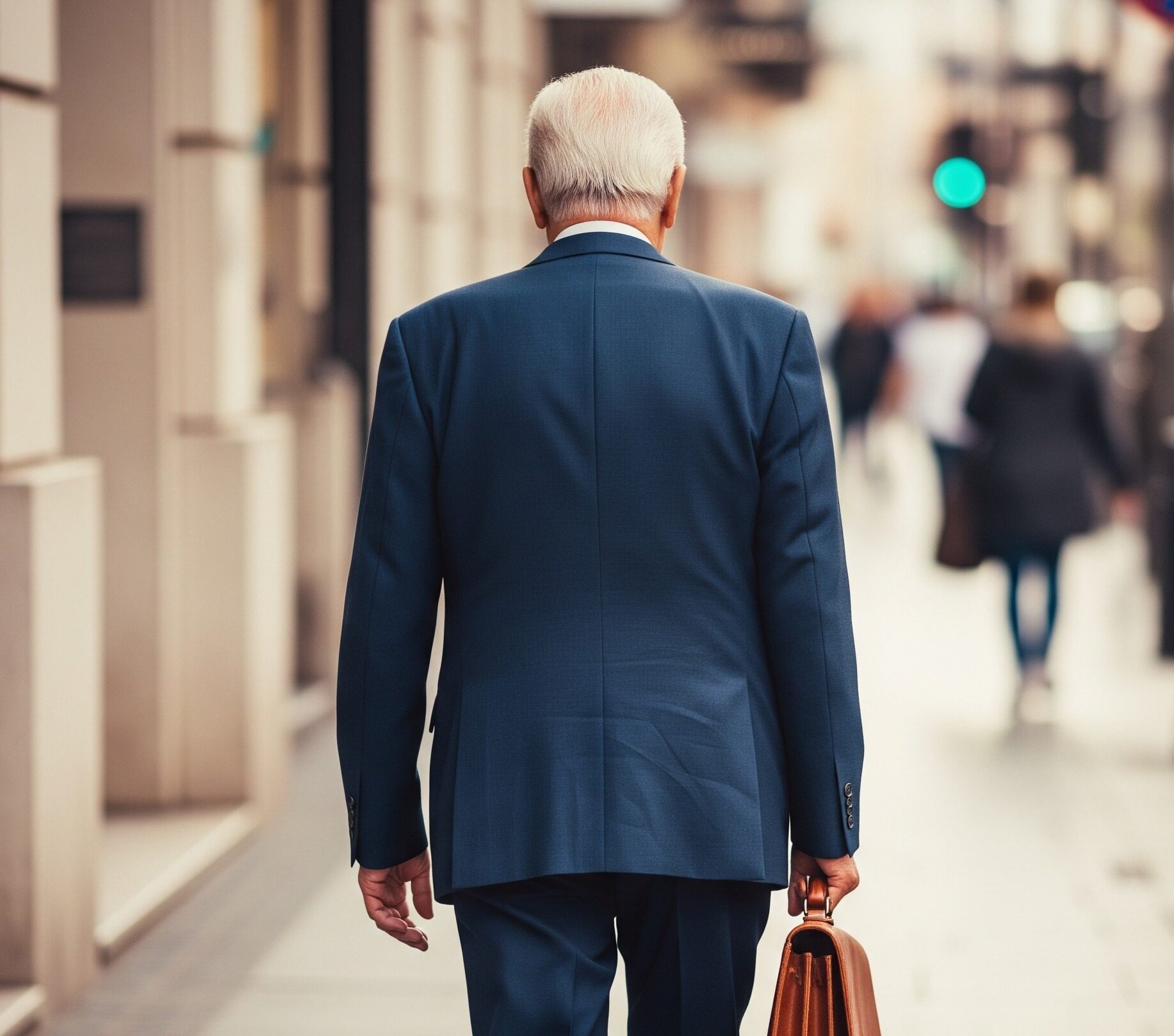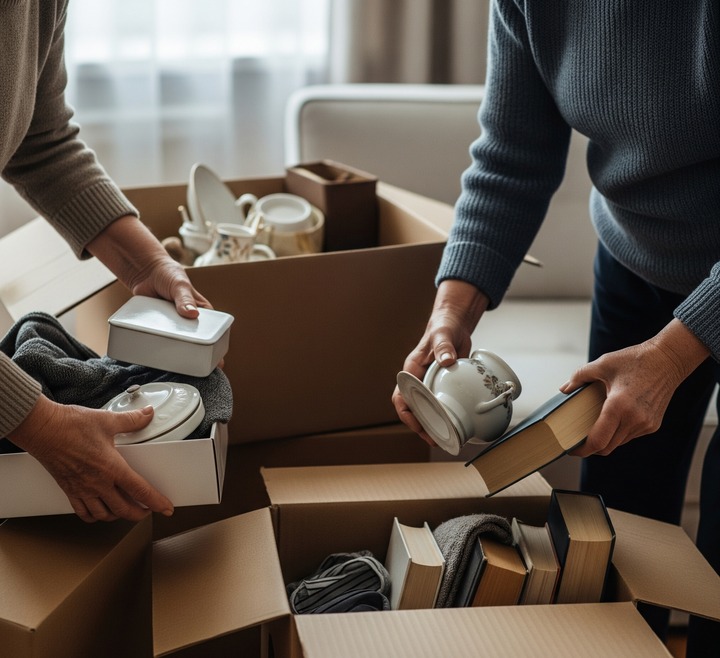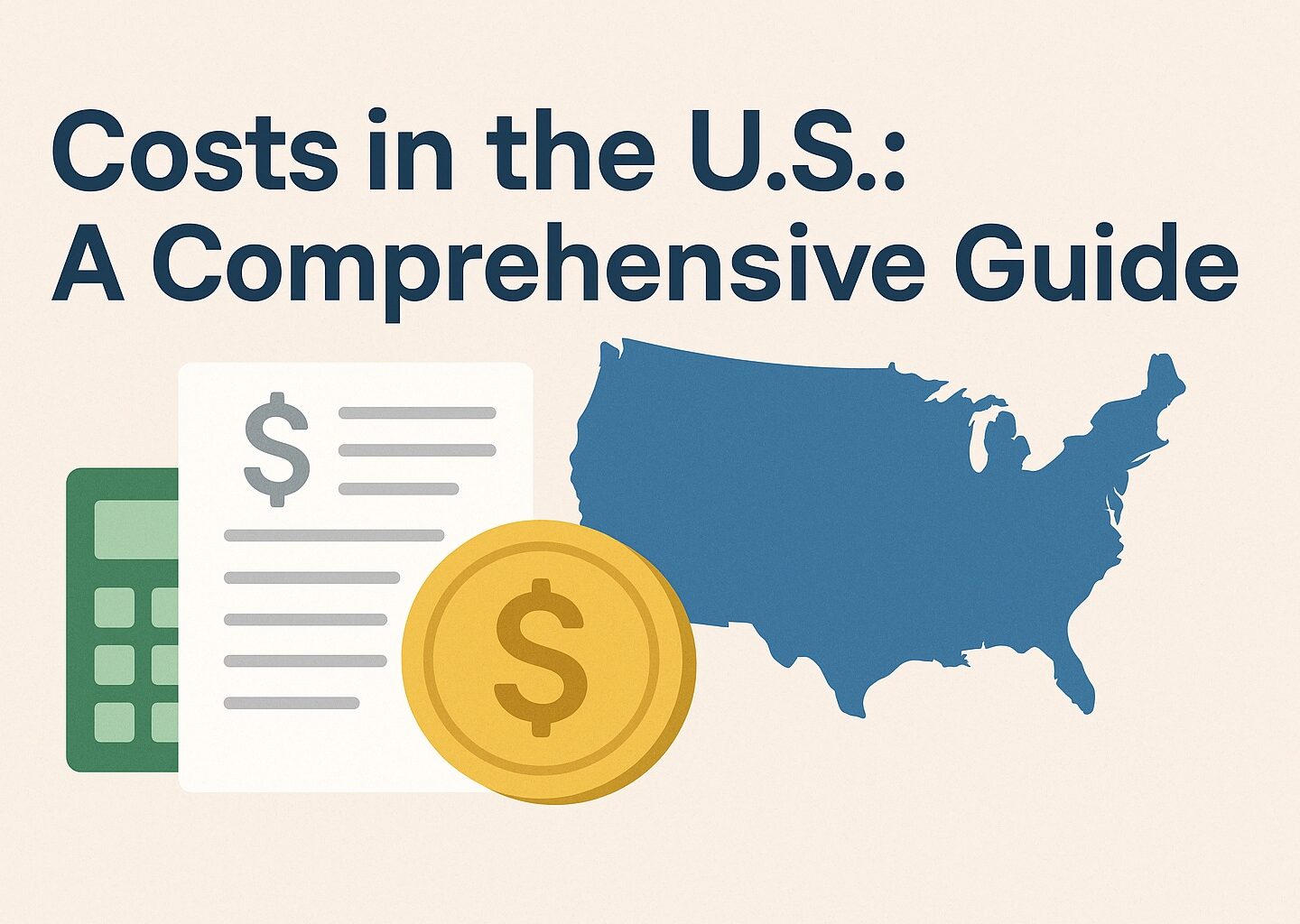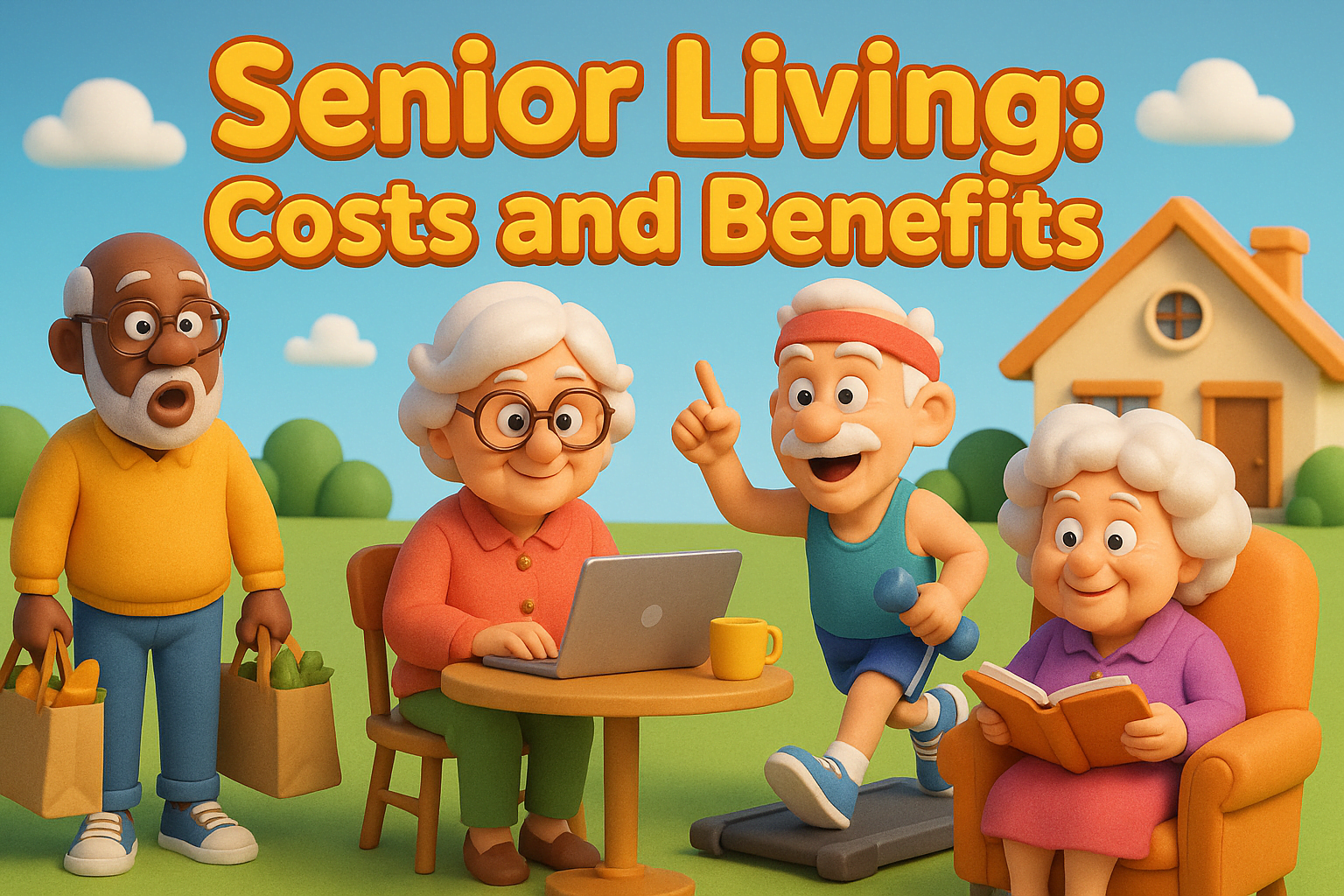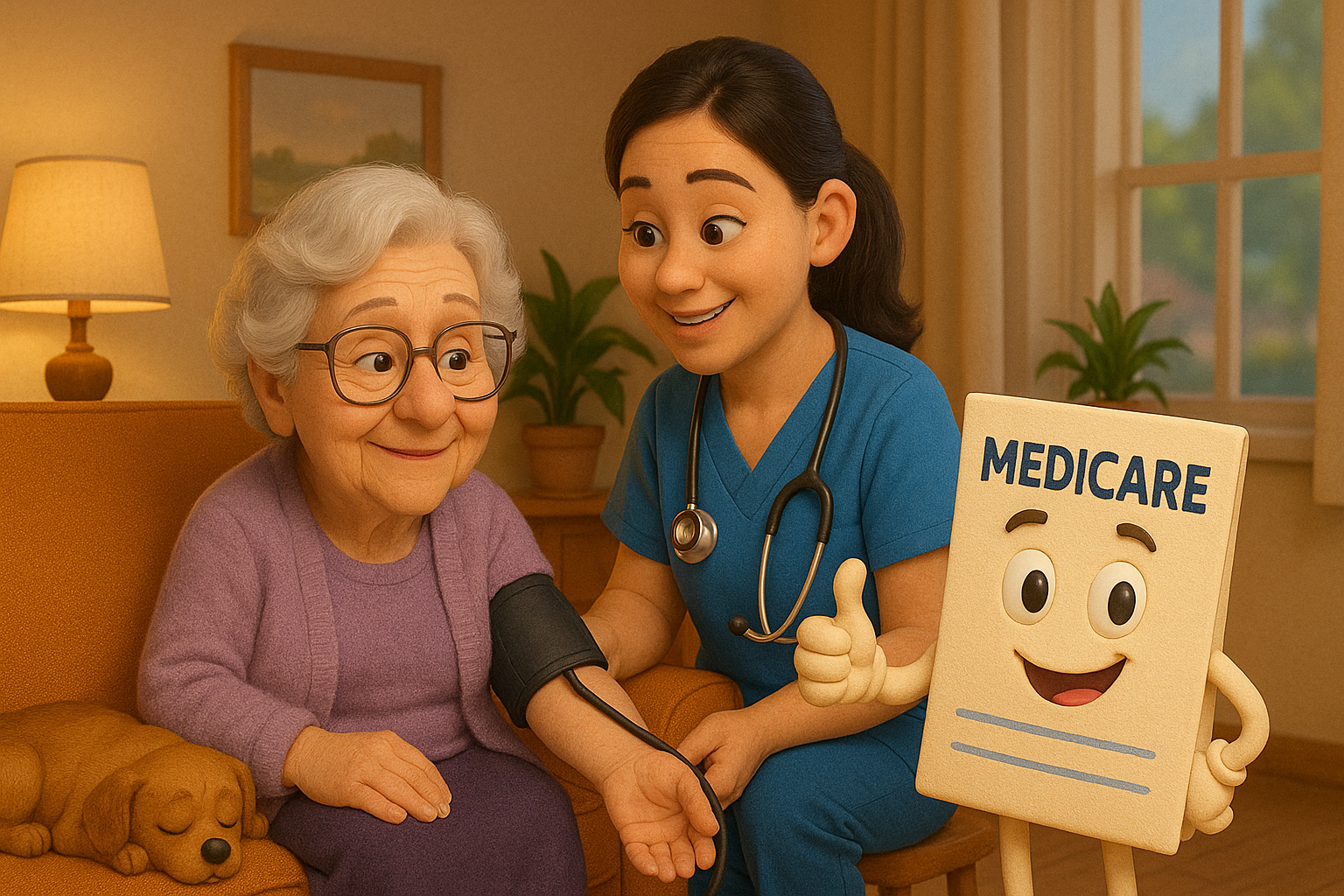The image of LGBTQ+ senior living communities throughout the U.S. is being transformed by renewed demand for safe, welcoming, and affirming communities for older adults who, through a lifetime of discrimination, have been relegated to the margins of mainstream society. These communities cater solely to the 55+ market with levels of care and living arrangements varying. The expansion of such specialist populations, accompanied by increasing activism and legislative protections, marks a critical shift toward addressing the specific needs and historical vulnerabilities of LGBTQ+ older adults. Let’s take a look at some of the pioneering providers across the United States.
Spotlight on Key LGBTQ+ Affirming Communities Across the U.S.
Several communities across the U.S. have emerged as significant examples of LGBTQ+ affirming senior living, each offering unique features and addressing various needs within the 55+ demographic.
- The Palms of Manasota (Palmetto, Florida): Having opened its doors in 1994, this community has the distinction of being the oldest and most well-known LGBT retirement community in the United States, situated halfway between St. Petersburg and Miami. It is an independent living community where residents own their homes, which provides a comfortable and secure environment.
- The Connie House – The Pride Tribe (Boynton Beach, Florida): The Connie House is Palm Beach County’s first LGBT-focused assisted living senior residence. Seniors are guaranteed genuine, empathic, and compassionate service from professional caregivers who will treat them with dignity and respect. As a vibrant environment, The Pride Tribe hopes to honor the pioneering spirit of Connie Kurtz and exceed all expectations in creating a safe space for elders who identify as members of the rainbow community.
- Rainbow Vista (Gresham, OR): Gresham’s first LGBTQ+ retirement home, the active 55+ community, offers a place where seniors can find themselves comfortably in a safe and comfortable setting. Residents expect to continue to create a lifestyle that suits the needs of its residents. The family-like community offers many opportunities for blossoming friendships between staff and residents.
- A Place for Us (Cleveland, Ohio): As Ohio’s first LGBTQ-affirming senior community of affordable housing for individuals 55 years and older, “A Place for Us” features one- and two-bedroom apartments. Included among its amenities are a fitness center, meditation room, laundry facilities on every floor, and library. The community is designed as income-qualified affordable housing to make it more accessible to a diverse range of seniors.
- Living Out (Palm Springs, California): This upscale 55+ active adult community comprises 122 apartments nestled on more than nine beautifully landscaped acres. It has upscale amenities such as an upscale full-service restaurant and bar (“Alice B.”), high-tech fitness center, private screening room, and resort-style swimming pools. Notable among its amenities is the on-site dog park and “Tailwaggers,” an award-winning pet supply center with grooming, daycare, and overnight pet hotel services. The lease includes all utilities (other than telephone and cable), weekly housekeeping, and daily continental breakfast, a worry-free living experience in its entirety.
- Village Hearth Cohousing (Durham, NC): This cohousing neighborhood is historic as the first 55+ LGBTQ+ individuals’ cohousing neighborhood in the United States designed and built by and for lesbian, gay, bisexual, and transgender individuals and their friends and allies. It has 28 single-story cottages, each with a covered front porch and private backyard, that are arranged around a 2600 square foot common house. The common house has a gourmet kitchen, large dining/multipurpose room, exercise room, and guest suite that support shared activity and community life.
- Fountaingrove Lodge (Santa Rosa, California): Referenced as the only LGBT Continuing Care Retirement Community (CCRC) in America, Fountaingrove Lodge offers an upscale, high-end lifestyle in retirement. Residents can enter as active, independent individuals and access increasingly more assistance, including memory care, as needs evolve. The community offers a full activity calendar, fitness classes, outdoor pool, health classes, restaurant dining, and 24-hour customized assistance to offer an integrated model of wellness and care.
- Stonewall Gardens (Palm Springs, California): This building has the added distinction of being the country’s first LGBT-targeted assisted living facility exclusively for seniors. It includes support with the daily living needs of taking medication, dressing, grooming, and bathing, complemented by the presence of an on-site nurse and 24-hour care staff. The community accommodates pets and features a number of social amenities, including clubs, social activities, and a pool.
- The Pryde (Hyde Park, Massachusetts): Outside of Boston, The Pryde is another low-cost LGBT residential complex, meeting the need for affordable and affirming housing in the Northeast.
https://assistedlivingmagazine.com/nursing-home/the-pryde-by-lgbtq-senior-housing-inc/
Key LGBTQ+ Affirming Senior Living Communities in the U.S.
| Community Name | Location (City, State) | Type of Community | Key Amenities/Features | Noteworthy Aspect |
| The Palms of Manasota | Palmetto, Florida | Residential Neighborhood (Independent Living) | Home ownership, community setting | Oldest and best-known LGBTQ retirement community in U.S. |
| A Place for Us | Cleveland, Ohio | Independent Living Apartments (Affordable) | 1-2 bedroom apartments, fitness center, meditation room, library, planned activities | First LGBTQ-friendly senior housing community in Ohio; income-qualified |
| Living Out | Palm Springs, California | Luxury Independent Living Apartments | Upscale restaurant (“Alice B.”), fitness center, screening room, resort-style pools, dog park with pet services, weekly housekeeping, daily continental breakfast | Luxury 55+ active adult community; utilities included |
| Village Hearth Cohousing | Durham, NC | Co-Housing (55+) | 28 single-story cottages, 2600 sq ft common house (gourmet kitchen, exercise room, guest suite), gardens, walking trails | First 55+ cohousing community in USA created by and for LGBTQ+ people and allies |
| Fountaingrove Lodge | Santa Rosa, California | Continuing Care Retirement Community (CCRC) | Luxurious setting, fitness center, pool, restaurant-style dining, 24-hour individualized assistance, memory care options | Only LGBT CCRC in the U.S.; comprehensive continuum of care |
| Stonewall Gardens | Palm Springs, California | Assisted Living Facility | On-site nurse, meals, 24-hour staff assistance for daily living, pet-friendly, social outings, pool | Nation’s first assisted living facility for LGBT seniors |
| The Pryde | Hyde Park, Massachusetts | Low-Income Subsidized Housing | Affordable housing option | LGBT residential facility near Boston |
Models of LGBTQ+ Senior Living
- Independent Living Apartments: These communities offer private residences with amenities and services tailored for active seniors who require minimal assistance. An example is “A Place for Us” in Cleveland, Ohio, which provides one- and two-bedroom apartments equipped with a fitness center, meditation room, laundry facilities on every floor, and a library. Similarly, “Living Out” in Palm Springs, California, offers 122 luxury apartments on over nine beautifully landscaped acres, featuring extensive amenities such as a full-service restaurant, a fully equipped fitness center, a private screening room, and resort-style pools.
- Residential Neighborhoods: These communities often feature a gated environment where residents own their homes, fostering a strong sense of community among like-minded individuals. “The Palms of Manasota” in Palmetto, Florida, launched in 1994, is recognized as the oldest and most prominent LGBT retirement community in the U.S., catering to independent living residents who own their homes. “Birds of a Feather” in Pecos, New Mexico, serves as another example, specifically designed for gay and lesbian individuals within a rural, mountainous setting.
- Co-Housing: This model emphasizes intentional community living, where residents actively participate in the design and operation of their neighborhood, balancing personal privacy with shared facilities and activities. “Village Hearth Cohousing” in Durham, North Carolina, stands out as the first 55+ cohousing community in the USA created by and for LGBTQ+ individuals and their friends and allies. It comprises 28 homes in four-unit buildings and a common house, situated on 15 wooded acres. The common house, spanning 2600 square feet, includes a gourmet kitchen, a large dining/multipurpose room, an exercise room, and a guest suite.
- Continuing Care Retirement Communities (CCRCs): CCRCs provide a continuum of care, enabling residents to transition seamlessly through independent living, assisted living, and skilled nursing care within the same community as their needs evolve. “Fountaingrove Lodge” in Santa Rosa, California, is distinguished as a luxurious, full-featured LGBT retirement home and is currently the only LGBT Continuing Care Retirement Community (CCRC) in the U.S. It offers a comprehensive schedule of activities, a fitness center, restaurant-style dining, and 24-hour individualized assistance, allowing residents to age in place.
- Assisted Living: These facilities provide daily care assistance with activities such as medication management, dressing, grooming, and bathing. “Stonewall Gardens” in Palm Springs, California, holds the distinction of being the nation’s first assisted living facility for LGBT seniors, offering an on-site nurse, meals, and 24-hour staff support. “The Connie House” in Boynton Beach, Florida, is a smaller residential home providing similar services with 24-hour staffing and all meals included.
- Low-Income Subsidized Housing: These communities are government-subsidized, requiring low-income qualifications, with rent often calculated on a sliding scale based on income. They address a critical need for affordable, affirming housing options. Notable examples include “Triangle Square” in West Hollywood, California; “John C. Anderson Apartments” in Philadelphia, Pennsylvania; and “Stonewall House” in Brooklyn, New York. “Stonewall House” is recognized as the largest LGBTQ+-friendly elder housing development in the country and the first in New York City, featuring a SAGE Center on its ground floor. “Crotona Pride House” in the Bronx, New York, is another new, LGBTQ+-welcoming, affordable elder housing development. Many of these communities are in high demand, often having full or closed waiting lists.
Leading States and Cities for LGBTQ+ Senior Living
Identifying truly LGBTQ+ friendly cities for senior living goes beyond mere population demographics; it involves a holistic assessment of legal protections, social infrastructure, and overall quality of life.
Criteria for Identifying LGBTQ+ Friendly Retirement Destinations
The selection of top cities for LGBTQ+ retirees is based on a comprehensive analysis of over 100 metrics from various resources, including the Human Rights Campaign Municipal Equality Index (HRC MEI), local and state legislation, healthcare access, cost of living, and community vibrancy.
- Human Rights Campaign Municipal Equality Index (HRC MEI) Score: This is a crucial indicator, as it assesses how inclusive municipal laws, policies, and services are of LGBTQ+ people who live and work in a given area. Cities with perfect or nearly perfect scores are highly favored, as they demonstrate a systemic commitment to LGBTQ+ equality at the local governance level.
- Local and State Legislation: Strong local ordinances and state legislation protecting LGBTQ+ rights are foundational. This includes non-discrimination laws, provisions for transgender-inclusive health benefits for city employees, and bans on conversion therapy. These legal frameworks provide a protective shield against discrimination in housing, employment, and public accommodations, which is paramount for older adults.
- Access to Certified LGBTQ-Friendly Healthcare: The availability of healthcare providers and systems that are culturally competent and welcoming to the LGBTQ+ community is a key factor. This addresses a significant concern for many older adults who may have faced discrimination in healthcare settings throughout their lives.
- Overall Quality of Healthcare: Beyond LGBTQ-specific care, the general quality and accessibility of healthcare services in a city are considered, as they directly impact the overall well-being and health outcomes of seniors.
- Median Age and Cost of Living: These practical factors are crucial for retirees. Cities with a reasonable cost of living, including affordable assisted living and home health care costs, and a significant senior population are preferred, ensuring financial sustainability and a peer group.
- Weather and Scenery: A desirable climate and appealing natural surroundings contribute significantly to a city’s attractiveness for retirement, enhancing the quality of life and opportunities for outdoor activities.
- Number of LGBT-Friendly Retirement Communities: The actual presence and density of retirement communities specifically catering to or explicitly welcoming LGBTQ+ seniors is a direct and tangible measure of a city’s suitability for this demographic.
- Vibrant LGBTQ+ Communities and Resources: Cities with established LGBTQ+ communities, a visible presence of LGBTQ+ businesses, regular events (such as Pride festivals), and robust support organizations (e.g., Pride Centers, advisory commissions) indicate a strong social fabric and a supportive network for older adults.
- AARP’s Livability Scoring System: Finally, selected cities are often filtered through AARP’s Livability Scoring System. This system assesses various categories including housing, neighborhood, transportation, environment, health, engagement, and opportunity, ensuring a comprehensive evaluation of a city’s overall livability for seniors.
Analysis of Top Cities and Their Distinctive Offerings
Based on the aforementioned criteria, several U.S. cities stand out as leading destinations for LGBTQ+ senior living:
- Fort Lauderdale, Florida: Often referred to as the “Gay Capital City of Florida,” Fort Lauderdale is a favored location among LGBTQ+ residents and visitors. It boasts 23 miles of sandy Atlantic coastline, including several gay-specific beaches, and is home to Wilton Manors, a renowned gayborhood with numerous gay-friendly businesses, bars, and restaurants. The city and Broward County enforce local ordinances protecting LGBTQ+ rights, and the Pride Center Florida actively addresses the distinct health, social, and economic needs of the LGBTQ+ community. While the overall cost of living is high, there is no state income tax, and assisted living and home health care costs are comparatively low.
- Austin, Texas: Austin is characterized as a “diverse, liberal oasis” within an otherwise politically conservative state, known for its “Keep Austin Weird” motto, vibrant music scene, and burgeoning foodie culture. The city offers warm weather, a low crime rate, and one of the largest LGBTQ+ communities in the country, comprising nearly 6% of its population. Austin actively champions the LGBTQ+ community, having formed the Lesbian, Gay, Bisexual, Transgender, and Queer Quality of Life Advisory Commission in 2017 to enhance government accountability on LGBTQ+ issues. The cost of living in Austin is average, with no state income tax, and it features over 100 area senior living facilities, including LGBTQ-friendly communities.
- Alexandria, Virginia: Located along the Potomac River, just a few miles south of Washington, D.C., Alexandria is considered a cultural U.S. hotspot that is highly supportive of its LGBTQ+ community. The Human Rights Campaign (HRC) has recognized Alexandria as a top LGBTQ+ city due to its local nondiscrimination laws and its provision of transgender-inclusive health benefits for city employees. Although the overall cost of living is 37% higher than the national average, primarily due to housing, the broader metro area (including Arlington) offers over 175 senior living facilities, many of which are LGBTQ+ friendly.
- Palm Springs, California: While not explicitly listed as a “top city” in some rankings, Palm Springs is a prominent and well-established location for LGBTQ+ senior living. It is home to “Living Out,” a luxury apartment community, and “Stonewall Gardens,” the nation’s first LGBT assisted living facility. Its long-standing and visible LGBTQ+ community, coupled with specific facilities catering to seniors, makes it a de facto leading city for this demographic.
- Cleveland, Ohio: Cleveland is notable as the home of “A Place for Us,” which is recognized as Ohio’s first LGBTQ-friendly senior housing community.
- Other notable cities mentioned for their LGBTQ+ friendliness and/or senior living options include West Palm Beach, Tampa, Dayton, Tucson, Minneapolis, Seattle, and Portland (often associated with nearby King City). These cities demonstrate strong local legislation, access to LGBTQ-friendly healthcare, and vibrant community resources.
The strong emphasis on the Human Rights Campaign Municipal Equality Index (HRC MEI) scores and local/state legislation in identifying these top cities reveals a significant dynamic: robust legal and policy protections often precede or accompany the development of numerous LGBTQ-friendly senior living facilities. Cities like Fort Lauderdale, Alexandria, and Tucson are explicitly cited for their strong local ordinances, non-discrimination laws, and transgender-inclusive health benefits. This suggests a direct relationship where comprehensive legal and policy frameworks create a safer and more welcoming environment, which in turn encourages the establishment and success of LGBTQ+ affirming businesses and senior living communities. These policies reduce the risk of discrimination for both residents and operators, making these cities particularly attractive for LGBTQ+ seniors seeking to retire openly and for developers aiming to serve this demographic. Policy, in this context, is not merely a reflection of inclusivity but a proactive force driving its practical manifestation in the built environment.
Beyond policy, the criteria for these leading cities also highlight the importance of vibrant LGBTQ+ communities and resources, including established gayborhoods, pride festivals, and support organizations. At the same time, practical considerations such as the cost of living, access to certified LGBTQ-friendly healthcare, and overall quality of healthcare are given equal weight. This indicates that LGBTQ+ seniors are seeking not just a safe place, but a thriving one that supports both their social and practical needs. The presence of a vibrant LGBTQ+ community provides essential social connection and cultural affirmation, while accessible and competent healthcare, combined with a reasonable cost of living, addresses the fundamental practicalities of aging. The ideal LGBTQ-friendly retirement destination is therefore a synergy of progressive policy, social vitality, and robust infrastructure, creating a holistic environment conducive to well-being.
A distinct pattern observed is the emergence of “oases” within broader politically conservative states, such as Austin, Texas, which is explicitly described as a “diverse, liberal oasis in an otherwise politically conservative state”. Despite Texas’s generally conservative political landscape, Austin maintains a high degree of LGBTQ+ friendliness due to strong local advocacy and a large, active LGBTQ+ community. This pattern underscores the power of local governance and community activism in shaping inclusive environments, even when state-level policies may be less supportive. For LGBTQ+ seniors, this means that retirement options are not solely dictated by state-level politics but can be found in specific urban centers that have actively cultivated inclusivity. This offers a nuanced perspective on geographic choice, allowing individuals to retire within a desired region while still accessing affirming communities.
Defining an LGBTQ+ Safe and Affirming Community
The foundation of an LGBTQ+ safe and affirming community rests on robust legal protections that guarantee freedom from discrimination, harassment, and neglect. These protections operate at multiple governmental levels, ensuring that LGBTQ+ older adults can age with dignity and respect. However, true inclusivity extends beyond mere legal compliance to active, intentional efforts to create a welcoming and affirming environment.
Legal Protections and Resident Rights
LGBTQ+ older adults possess fundamental rights to be free from discrimination in both public and private housing, including housing assistance programs and senior housing initiatives. This extends to freedom from discrimination, isolation, harassment, abuse, and neglect in long-term care, rehabilitation, and assisted-living facilities, with an emphasis on respecting privacy, relationships, gender identity, and personal choices.
- Federal Protections: The Fair Housing Act (FHA) prohibits discrimination in most private and public housing based on sex, a prohibition that has been interpreted to include sexual orientation and gender identity. This makes it illegal to discriminate against any person in the terms, conditions, or privileges of sale or rental of a dwelling, or in the provision of services. Furthermore, the U.S. Department of Housing and Urban Development’s (HUD) Equal Access Rule, enacted in 2012, explicitly prohibits discrimination based on sexual orientation, gender identity, and marital status in federally-funded housing and federally-insured mortgage programs. This rule also inclusively defines “family” and “household” for HUD programs and prohibits owners and operators from inquiring about an applicant’s or occupant’s sexual orientation or gender identity to determine eligibility. For housing establishments that also provide medical care, such as assisted living facilities, Section 1557 of the Affordable Care Act (ACA) further prohibits discrimination in any health program or activity receiving federal financial assistance.
- State, County, and Municipal Protections: Beyond federal mandates, numerous states, counties, and municipalities have enacted their own laws prohibiting housing discrimination on the basis of sexual orientation and gender identity. For instance, California explicitly makes it illegal to deny housing based on sexual orientation or gender identity. In Washington D.C., Law 23-154 established an LGBTQ and HIV long-term care bill of rights, providing specific rights and legal protections for residents.
- Right to Dignity and Respect: Regardless of specific statutes, LGBTQ+ older adults have an inherent right to be treated fairly, respectfully, and with dignity, and to have their privacy, relationships, gender identity, and choices equally respected. This includes protection from isolation, harassment, abuse, and neglect across various care settings. It is important to note that a facility’s failure to address harassment by other residents can also be considered a form of discrimination. Organizations like SAGE, in partnership with the Human Rights Campaign Foundation, have undertaken significant efforts to develop national tools for LGBTQ+ inclusion in senior housing and long-term care communities.
Key Standards for Inclusivity
True inclusivity extends beyond legal compliance to active, intentional efforts to create a welcoming and affirming environment. The Long-Term Care Equality Index (LEI), a program developed by SAGE and the Human Rights Campaign Foundation, provides a comprehensive framework for assessing and recognizing leaders in LGBTQ+ inclusive care.
- Non-Discrimination Policies: A foundational requirement for an inclusive community is an explicit, LGBTQ+ inclusive non-discrimination policy. This policy must specifically include the terms “sexual orientation” and “gender identity” (or “gender identity and expression”) and apply to residents, visitors, and staff. Crucially, this policy must be clearly communicated to all stakeholders through multiple channels, typically both online and in print for residents and the public, and in at least one way for staff.
- Staff Training in LGBTQ+ Resident-Centered Care: This is a critical component of genuine affirmation. Communities must ensure that staff, particularly management and non-management, receive ongoing training in LGBTQ+ aging-related topics. For example, the LEI recommends a minimum of one hour of LGBTQ+ Aging Cultural Competency Training for 50% of management and non-management staff. This training directly addresses the fear of discrimination from staff, which a survey found was a top barrier for LGBTQ+ individuals considering moving into a Continuing Care Retirement Community (CCRC).
- Resident Services and Support: This criterion encompasses providing gender-affirming services and ensuring that medical decision-making processes are inclusive and respectful of LGBTQ+ identities and relationships. Communities are expected to be aware of and interested in residents’ individual needs and to affirm their relationships, recognizing the diverse family structures within the LGBTQ+ community.
- Resident and Community Engagement:
- Resident Satisfaction Surveys: Inclusive communities proactively conduct resident satisfaction surveys that include specific questions about LGBTQ+ identity and concerns. These surveys also assess how well staff respect needs related to sexual orientation and gender identity. This practice allows for direct feedback from residents and facilitates continuous improvement in the community’s inclusivity efforts.
- Work with External LGBTQ+ Organizations: Collaborating with external LGBTQ+ organizations and community members is vital for gathering information, staying current on best practices, and ensuring the community remains connected to broader LGBTQ+ advocacy and resources.
- Support LGBTQ+ Related Events: Actively supporting or hosting LGBTQ+ events, such as health fairs, movie nights, speaker events, social group meetings, or local Pride celebrations, fosters a strong sense of community and visibility for LGBTQ+ residents. These events provide opportunities for social connection and affirmation.
- Inclusive Marketing: Marketing and advertising efforts should be explicitly LGBTQ+ inclusive. This means featuring LGBTQ+ content and imagery in paid advertisements and free press, across digital media platforms (e.g., LGBTQ+ websites, news sources), and through paid social media advertising. Such inclusive marketing signals a welcoming environment to prospective residents.
- Public Advocacy for LGBTQ+ Equality: Leading communities demonstrate their commitment to broader social justice by publicly supporting LGBTQ+ equality under the law. This involves using their platform as service providers and advocates to support specific legislation or initiatives at local, state, or federal levels, such as writing op-eds in favor of equality acts or submitting letters in support of non-discrimination laws.
The shift in emphasis from mere legal compliance to active affirmation represents a crucial evolution in defining “safe” for LGBTQ+ seniors. While federal protections like the Fair Housing Act and HUD’s Equal Access Rule establish a baseline against discrimination, the criteria outlined by the LEI and the concerns expressed by LGBTQ+ elders indicate that simply not discriminating is insufficient. The focus on staff training in LGBTQ+ Resident-Centered Care, the provision of gender-affirming services, and the need to alleviate fears of being “shoved in the closet” points to a deeper requirement for proactive affirmation. This signifies that for LGBTQ+ seniors, safety is not just the absence of harm but the active presence of cultural competence, understanding, and celebration of their identities. This approach directly addresses the historical trauma and unique vulnerabilities faced by LGBTQ+ elders, ensuring they feel truly seen, respected, and can live authentically without fear of judgment or erasure. It marks a transition from a reactive legal framework to a proactive care model.
The explicit requirement for staff training in LGBTQ+ resident-centered care, with specific hour requirements for management and non-management staff, underscores the critical importance of human interaction within these communities. SAGE also emphasizes training eldercare providers to be LGBTQ+ culturally competent. This directly correlates with the “fear of discrimination from staff” cited by respondents in the Capitol Hill Village survey. Even with strong non-discrimination policies in place, a lack of cultural competency among staff can lead to subtle forms of discrimination, discomfort, or neglect. Therefore, ongoing, mandatory training is a vital intervention to bridge the gap between policy and practice, ensuring that staff understand and respect the unique histories, relationships, and identities of LGBTQ+ residents, thereby fostering a truly welcoming atmosphere and mitigating the risk of re-closeting or mistreatment.
The Role of Advocacy Organizations
Organizations like SAGE (Services & Advocacy for GLBT Elders), the Human Rights Campaign Foundation (HRC), and Lambda Legal play pivotal roles in driving progress, providing essential resources, and ensuring protections for LGBTQ+ elders.
- SAGE: As the largest and oldest organization dedicated to improving the lives of LGBTQ+ older adults, SAGE’s National LGBTQ+ Elder Housing Initiative focuses on multiple fronts. These include building LGBTQ+-friendly housing (such as Stonewall House and Crotona Pride House in NYC), advocating nationally against housing discrimination, training eldercare providers to be culturally competent, educating seniors about their housing rights, and assisting builders across the U.S. in replicating LGBTQ+-friendly housing models. SAGE also operates the SAGE LGBTQ+ Elder Hotline, providing direct support and information.
- Human Rights Campaign Foundation (HRC): The HRC Foundation partners extensively with SAGE on initiatives like the Long-Term Care Equality Index (LEI). This collaboration is designed to recognize and promote LGBTQ+ inclusion in senior housing and long-term care settings, establishing benchmarks for affirming environments.
- Lambda Legal: This national legal organization serves as a crucial resource, providing updated information on housing rights for LGBT seniors. They also offer a help desk for individuals who believe they have been denied housing or are experiencing anti-gay or anti-trans discrimination where they live.
The consistent collaboration between SAGE and the Human Rights Campaign Foundation on the Long-Term Care Equality Index (LEI) demonstrates a coordinated and sustained effort to establish and promote best practices within the senior living industry. SAGE’s broader initiatives, encompassing housing development, national advocacy, and rights education, further underscore this collective impact. This reveals that the progress observed in LGBTQ+ senior living is not merely organic market growth but a direct outcome of sustained, organized advocacy. These organizations serve as crucial standard-setters, educators, and watchdogs, pushing the industry beyond basic legal compliance towards comprehensive inclusivity. Their work creates a virtuous cycle: by defining what “affirming” means through frameworks like the LEI, they empower consumers, educate providers, and encourage policy changes, ultimately expanding the availability and quality of safe housing options for LGBTQ+ elders.
Conclusion and Future Outlook
The landscape of LGBTQ+ senior living in the United States is characterized by increasing diversity in community models, the establishment of identifiable geographic clusters, and a shifting appreciation for what makes truly affirming care. Although legal protections provide a necessary protection against discrimination, attention has now firmly shifted to proactive cultural competence, comprehensive staff training, and robust community outreach to address the unique needs and historical vulnerabilities of LGBTQ+ elders. The continued efforts of organizations like SAGE and the Human Rights Campaign are important in driving this momentum, so that LGBTQ+ seniors can age with dignity, security, and an overbearing sense of belonging. The demand for these communities remains high, particularly when looking at affordable options, indicating that there is still room for expansion and progress within this important sector.
The trend suggests a future in which LGBTQ+ welcoming senior living is no longer a specialty product but an integral part of mainstream and inclusive senior care. Ensuring that it does will take ongoing policy advocacy to enhance legal protections and hold them in place. It will also require further investment in diverse housing models to meet the diverse financial and care needs of the aging LGBTQ+ population, particularly in underserved communities and by low-income seniors. Also needed will be continuous education and cultural competency training across the full range of elder care so that all LGBTQ+ elders can live openly and honestly through their golden years.


